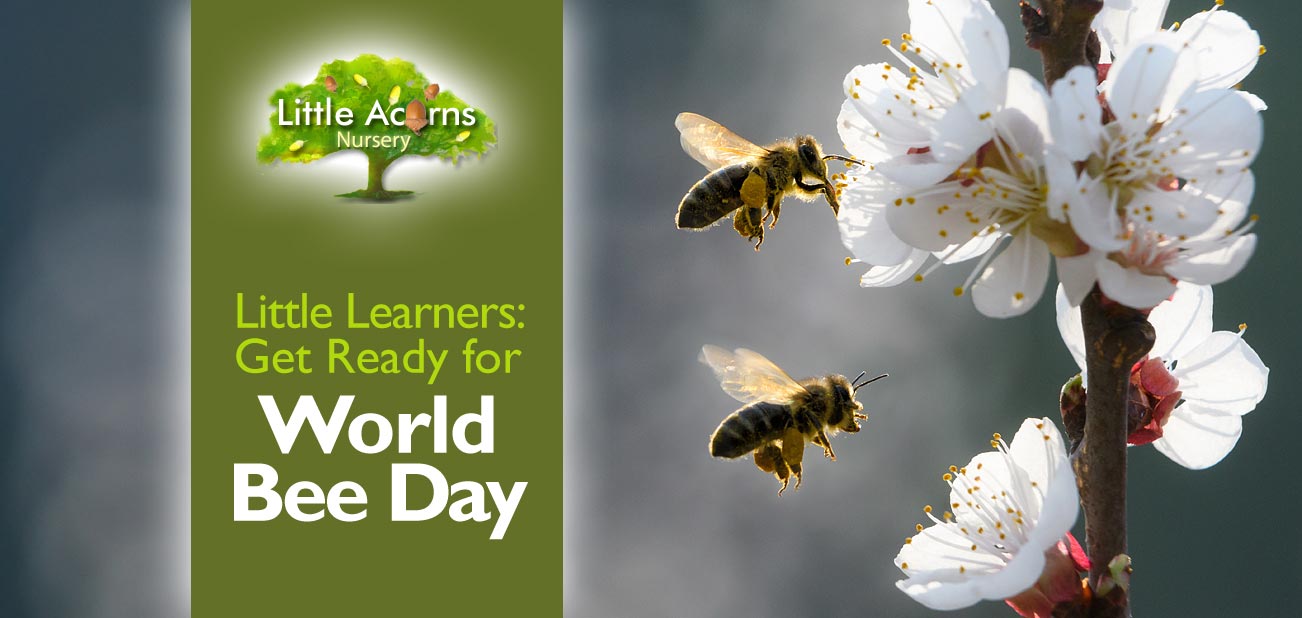
 Little learners, get ready – it’s almost time to buzz into action for World Bee Day! The annual event arrives in May and it’s a brilliant opportunity for children and families to get involved in something meaningful, fun, and full of learning opportunities.
Little learners, get ready – it’s almost time to buzz into action for World Bee Day! The annual event arrives in May and it’s a brilliant opportunity for children and families to get involved in something meaningful, fun, and full of learning opportunities.
Bees are amazing little helpers, whether in gardens, parks or the countryside — but they need our help too! World Bee Day is a chance for children to discover the magic of these fascinating creatures, learn more about the natural world, and start to build early environmental awareness. They can get proactive too. Whether by planting wildflowers, spotting bees in the garden, or creating bee-inspired arts and crafts, even our tiniest learners can join in the buzz. Read on to learn more about this fun, educational, and hugely worthwhile event, which takes place each May.
World Bee Day
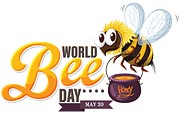 World Bee Day is celebrated every year on 20th May to raise awareness of the vital role that bees and other pollinators play in our world. From helping plants grow and supporting the food we eat every day, bees are some of nature’s hardest workers – and they need our help to survive and thrive.
World Bee Day is celebrated every year on 20th May to raise awareness of the vital role that bees and other pollinators play in our world. From helping plants grow and supporting the food we eat every day, bees are some of nature’s hardest workers – and they need our help to survive and thrive.
People around the world mark the day by learning more about bees, planting flowers, protecting wild habitats, and sharing ways to care for the environment. Under appropriate supervision, there are lots of ways even the youngest children can join in too!
2025’s World Bee Day Theme:
“Bee inspired by nature to nourish us all”
2025’s theme is all about how bees help feed the world, and how we can look after them by taking inspiration from nature. Without bees and pollinators, there would be no fruit, vegetables, crops, and nuts to keep us healthy. The message is simple: if we care for bees and their habitats, they’ll continue to care for us too by helping our plants grow and keeping the planet blooming.
Learn more about World Bee Day, its background and its aims here.
How World Bee Day Supports Early Years Learning
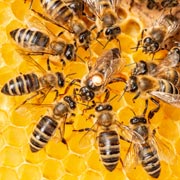 Getting involved in World Bee Day isn’t just fun — it also supports many areas of the Early Years Foundation Stage (EYFS), helping children learn and grow in meaningful, hands-on ways. Here are just a few ways bee-related activities can support early development:
Getting involved in World Bee Day isn’t just fun — it also supports many areas of the Early Years Foundation Stage (EYFS), helping children learn and grow in meaningful, hands-on ways. Here are just a few ways bee-related activities can support early development:
- Understanding the World: Through bee-related activities, children will learn about living things, the environment, and how everything in nature is connected. Exploring bees and their role in pollination helps little learners begin to understand the world around them — and how they can help look after it.
- Communication and Language: Talking about bees, asking questions, listening to stories and learning new words (like ‘pollination’, ‘nectar’ and ‘hive’) builds vocabulary and encourages curiosity.
 Expressive Arts and Design: Making bee crafts, drawing flowers, role-playing as working bees, or moving like insects in a dance — all help develop creativity and imagination.
Expressive Arts and Design: Making bee crafts, drawing flowers, role-playing as working bees, or moving like insects in a dance — all help develop creativity and imagination.- Personal, Social and Emotional Development: Caring for nature supports empathy and kindness. Group activities like planting or creating a bee garden also build teamwork and a sense of shared responsibility.
- Physical Development: Activities like planting seeds, cutting out bee shapes, or painting flower petals develop fine and gross motor skills through playful, purposeful movement.
In short, World Bee Day is a brilliant opportunity for young children to explore the wonders of the natural world in a way that supports their learning across multiple areas, is fun, and makes a difference!
Bee-Themed Activities for Under-Fives
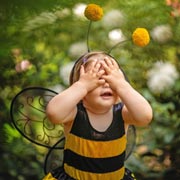 There are so many fun and simple ways for little learners to join in with World Bee Day! Here are a few activities that are perfect for children under five — each one encourages creativity, curiosity, and care for nature while also supporting the EYFS.
There are so many fun and simple ways for little learners to join in with World Bee Day! Here are a few activities that are perfect for children under five — each one encourages creativity, curiosity, and care for nature while also supporting the EYFS.
Plant a Pollinator Patch
Children can help plant bee-friendly flowers such as lavender, sunflowers, or wildflowers in a pot, bed or border. This not only encourages responsibility and care as they water and watch the plants grow but also supports the EYFS’s Understanding the World, Personal, Social & Emotional Development, and Physical Development goals.
Make Buzzy Bee Crafts
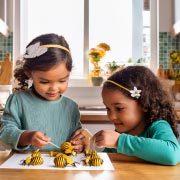 Using paper plates, cardboard tubes, egg cartons or recycled materials, children can create their own bees! Add wings, stripes, googly eyes and antennae for a hands-on creative session. These are wonderfully creative activities that will boost several areas of the EYFS including Expressive Arts & Design and Physical Development.
Using paper plates, cardboard tubes, egg cartons or recycled materials, children can create their own bees! Add wings, stripes, googly eyes and antennae for a hands-on creative session. These are wonderfully creative activities that will boost several areas of the EYFS including Expressive Arts & Design and Physical Development.
Bee-Themed Storytime
Snuggle up with stories that introduce bees in a child-friendly way. Great choices include The Very Greedy Bee by Steve Smallman and Jack Tickle, Bee: Nature’s Tiny Miracle by Patricia Hegarty, and What if There Were No Bees? by Suzanne Slade. Even better, encourage children to create their own stories involving bees! After storytime, don’t forget to talk about what bees do with your child and ensure they understand why they’re important. These are great activities to boost the EYFS’s Communication & Language, Literacy and Understanding the World focus areas.
Sing and Dance Like a Bee
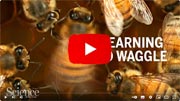 Do you or your child know about the bee Waggle Dance? It’s a real dance that honey bees do to communicate the direction, distance, and quality of a food source to the rest of the bee colony. Click the video thumbnail to learn more — it’s absolutely fascinating! It’s also a great piece of knowledge to inspire children to buzz around the room with bee-themed songs, dances, and movement games. What’s more, it will help children in their EYFS goals including Physical Development and Expressive Arts & Design.
Do you or your child know about the bee Waggle Dance? It’s a real dance that honey bees do to communicate the direction, distance, and quality of a food source to the rest of the bee colony. Click the video thumbnail to learn more — it’s absolutely fascinating! It’s also a great piece of knowledge to inspire children to buzz around the room with bee-themed songs, dances, and movement games. What’s more, it will help children in their EYFS goals including Physical Development and Expressive Arts & Design.
Go Bee-Spotting
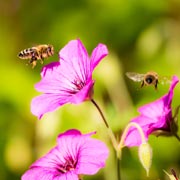 Explore the garden or outdoor space and, without disturbing them, see what pollinators your child can spot. Can they see any bees? What colours and flowers do they seem to like best? Are they collecting nectar? What type of bees are they? Bumblebees are super cute. Honey bees are super-hard workers and do so much for the world. A bee-spotting activity is a great opportunity to explore areas of the EYFS that include Understanding the World and Communication & Language.
Explore the garden or outdoor space and, without disturbing them, see what pollinators your child can spot. Can they see any bees? What colours and flowers do they seem to like best? Are they collecting nectar? What type of bees are they? Bumblebees are super cute. Honey bees are super-hard workers and do so much for the world. A bee-spotting activity is a great opportunity to explore areas of the EYFS that include Understanding the World and Communication & Language.
Honey Tasting and Talk
If age-appropriate (never feed to babies under 12 months) and there is no allergy to it, let children try a small taste of honey. Then talk about how bees make it, and discuss where it comes from. You could even take this a step further by helping your child make a simple honey-based snack. For example, honey drizzled over pancakes or porridge oats — delicious! Such activities can help children focus on EYFS areas including Understanding the World, Communication & Language, and Physical Development.
These activities are designed to feel like play but, underneath, they’re packed with learning opportunities. What’s more, they help children build positive associations with the natural world and start to understand that even small actions can make a big difference.
Let’s Celebrate Bees on World Bee Day
World Bee Day is a chance to slow down and take a closer look at the tiny creatures that do such big jobs for our planet. It’s also a fantastic opportunity to help young children connect with nature, ask questions, and start to develop a sense of care for the world around them. Through simple, enjoyable activities, families can help raise awareness of the challenges bees and other pollinators face — from habitat loss to climate change. It’ll show children that even small actions, like planting flowers or spotting bees in the garden, can make a difference. So, get them buzzing while they explore nature, grow in confidence and curiosity, and learn that they too can help protect bees along with the wonderful world they’re a part of.
Nursery Places in Clayton-le-Woods, Chorley

 With our own gardens and outdoor spaces close by, children have lots of opportunities to explore and learn from nature at Little Acorns Nursery in Clayton-le-Woods. We know just how important nature is to children and it’s one of the many reasons we love introducing them to nature-based events, themes, and activities like those suggested in today’s post.
With our own gardens and outdoor spaces close by, children have lots of opportunities to explore and learn from nature at Little Acorns Nursery in Clayton-le-Woods. We know just how important nature is to children and it’s one of the many reasons we love introducing them to nature-based events, themes, and activities like those suggested in today’s post.
At Little Acorns Nursery, children have a wonderful start in life in a warm, caring, home-from-home environment where they feel safe, nurtured, and valued. Free childcare is available for eligible children from just 9 months of age. If you’d like to explore the possibility of sending your baby, toddler, or preschool child under five to this wonderful nursery and preschool in Clayton-le-Woods, Chorley, get in touch today. We’d love to answer any questions, tell you more, and show you and your child around the setting.
Contact Little Acorns Nursery
Families living nearby in Clayton Brook, Clayton Green, Thorpe Green, Pippin Street, Buckshaw Village, Whittle-le-Woods, Farington, Bamber Bridge, Lostock Hall, Euxton, Leyland and Penwortham may also find our nursery conveniently close.

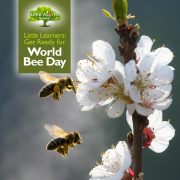
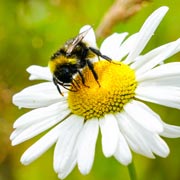 “Bee inspired by nature to nourish us all”
“Bee inspired by nature to nourish us all”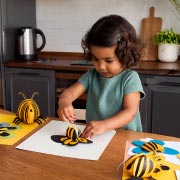 Expressive Arts and Design: Making bee crafts, drawing flowers, role-playing as working bees, or moving like insects in a dance — all help develop creativity and imagination.
Expressive Arts and Design: Making bee crafts, drawing flowers, role-playing as working bees, or moving like insects in a dance — all help develop creativity and imagination.
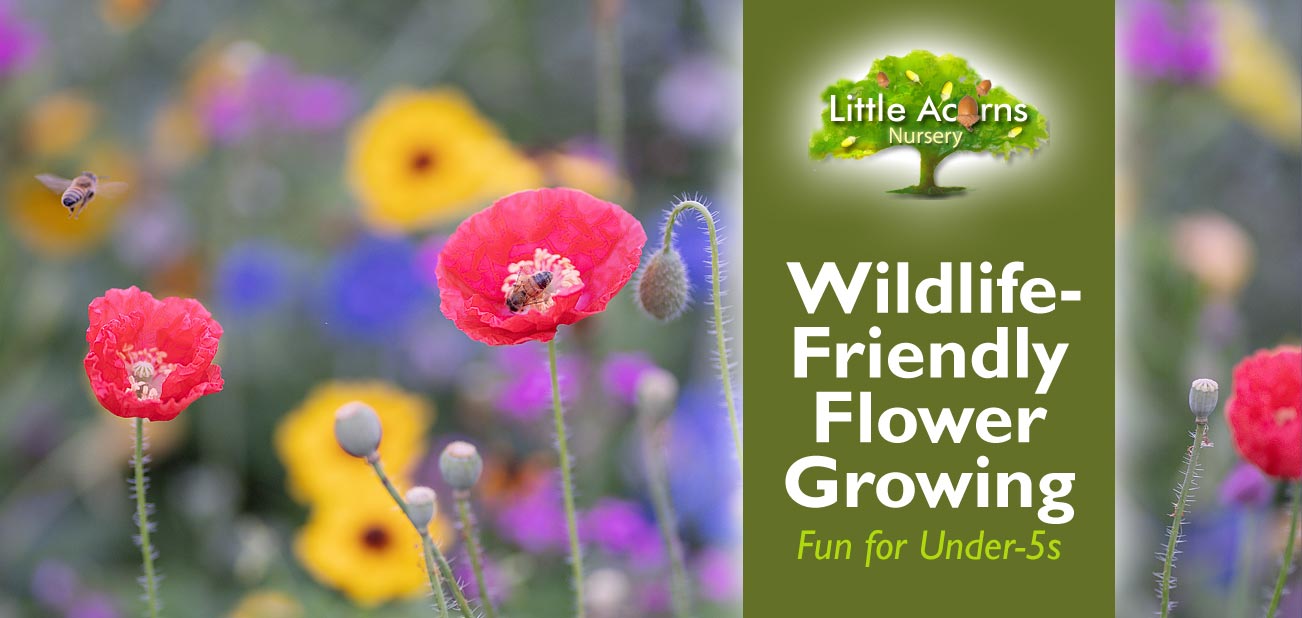
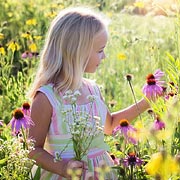 Today’s flower-growing children’s activity follows on nicely from last month’s
Today’s flower-growing children’s activity follows on nicely from last month’s 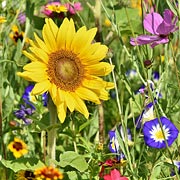 It’s possible to sow wildflower seeds from March right through to mid-October or, at a push, early November so long as snow or frost is not forecast. Those sown closer to March and April will generally flower in late spring/early summer. Those sown very late in the year will flower the following year, from spring onwards. Any sown up to and including the middle period, for example during July, should still flower in the same year — wildflowers usually bloom some 60 to 80 or so days later if they’re timed to grow in the same year as they’re sown.
It’s possible to sow wildflower seeds from March right through to mid-October or, at a push, early November so long as snow or frost is not forecast. Those sown closer to March and April will generally flower in late spring/early summer. Those sown very late in the year will flower the following year, from spring onwards. Any sown up to and including the middle period, for example during July, should still flower in the same year — wildflowers usually bloom some 60 to 80 or so days later if they’re timed to grow in the same year as they’re sown.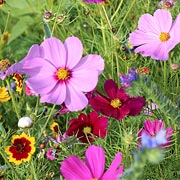 There are several ways for children and families to source wildflower seeds. The most obvious way is to buy them commercially, in seed packets. These are available from any number of different outlets including nurseries, supermarkets,
There are several ways for children and families to source wildflower seeds. The most obvious way is to buy them commercially, in seed packets. These are available from any number of different outlets including nurseries, supermarkets, 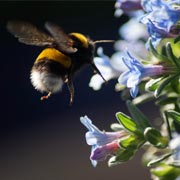 If you buy your child commercially-available wildflower seeds, the information on the packet will often say if the resulting flowers are bee-friendly, butterfly-friendly, good for pollinators, and so on. So, if you’re sourcing seeds that way, much of the decision-making criteria around which actual flowers to grow is made clear and therefore the choice is easy.
If you buy your child commercially-available wildflower seeds, the information on the packet will often say if the resulting flowers are bee-friendly, butterfly-friendly, good for pollinators, and so on. So, if you’re sourcing seeds that way, much of the decision-making criteria around which actual flowers to grow is made clear and therefore the choice is easy.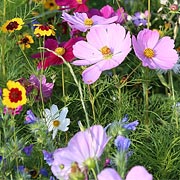 By their very nature, wildflowers are generally not very picky in regard to the type of soil they are happy to grow in. Therefore you/your child will have a greater choice of where to sow the wildflower seeds. A fairly clear sunny area is good, whether that’s garden beds, flower pots, window boxes, grow bags on a balcony, or even the lawn itself if you want a wild ‘meadow’ type lawn. Whatever the choice, it’s best if it’s somewhere that won’t be disturbed by you/the family though, as you wouldn’t want the wildflowers trampled once they do arrive.
By their very nature, wildflowers are generally not very picky in regard to the type of soil they are happy to grow in. Therefore you/your child will have a greater choice of where to sow the wildflower seeds. A fairly clear sunny area is good, whether that’s garden beds, flower pots, window boxes, grow bags on a balcony, or even the lawn itself if you want a wild ‘meadow’ type lawn. Whatever the choice, it’s best if it’s somewhere that won’t be disturbed by you/the family though, as you wouldn’t want the wildflowers trampled once they do arrive. With regard to sowing the seeds, follow any seed-specific instructions on packets in relation to timing and spacing. If you’re using self-harvested seeds or there are no instructions, simply sprinkle the seeds so they’re spaced, fairly evenly, i.e. not too densely sown. This will avoid the wildflower plants having to compete with one another once they start growing. A tip is to sprinkle from a height as this will naturally scatter them more widely. Once scattered, your child can help* to pat the soil surface down, either by hand or using the back of a tool like a spade or a trowel, so that the seeds are secured in the soil. Children can even ‘walk’ them in if they prefer. Once complete, ensure that you/your child keep the soil damp over the coming weeks. The preparation stage really is as simple as that!
With regard to sowing the seeds, follow any seed-specific instructions on packets in relation to timing and spacing. If you’re using self-harvested seeds or there are no instructions, simply sprinkle the seeds so they’re spaced, fairly evenly, i.e. not too densely sown. This will avoid the wildflower plants having to compete with one another once they start growing. A tip is to sprinkle from a height as this will naturally scatter them more widely. Once scattered, your child can help* to pat the soil surface down, either by hand or using the back of a tool like a spade or a trowel, so that the seeds are secured in the soil. Children can even ‘walk’ them in if they prefer. Once complete, ensure that you/your child keep the soil damp over the coming weeks. The preparation stage really is as simple as that!


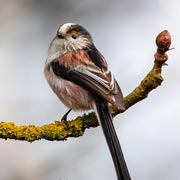 1. Bird spotting
1. Bird spotting ee & Butterfly Spotting
ee & Butterfly Spotting 3. Search for Animal Tracks
3. Search for Animal Tracks 4. Make a Den
4. Make a Den 5. Float a Boat
5. Float a Boat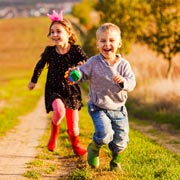 6. Go on a Ramble
6. Go on a Ramble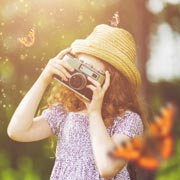 7. Get into Photography
7. Get into Photography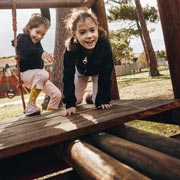 8. Obstacle Course
8. Obstacle Course 9. Have a Picnic
9. Have a Picnic
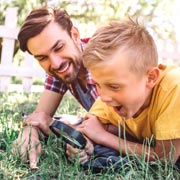 11. Hunt for Mini Beasts
11. Hunt for Mini Beasts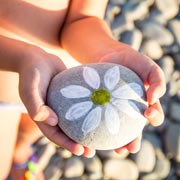 12. Get Creative with Rocks & Stones
12. Get Creative with Rocks & Stones Whether on the beach or in the garden, it’s surprising how creative children can be with stones and rocks! Stones can be painted with lovely patterns or images, perhaps combined with simple words or as part of a ‘stone story’. Bigger rocks can be piled one on top of the other to form sculptures — these look magical. Children will love these and other creative activities that they can take part in outdoors, with simple stones and rocks.
Whether on the beach or in the garden, it’s surprising how creative children can be with stones and rocks! Stones can be painted with lovely patterns or images, perhaps combined with simple words or as part of a ‘stone story’. Bigger rocks can be piled one on top of the other to form sculptures — these look magical. Children will love these and other creative activities that they can take part in outdoors, with simple stones and rocks.